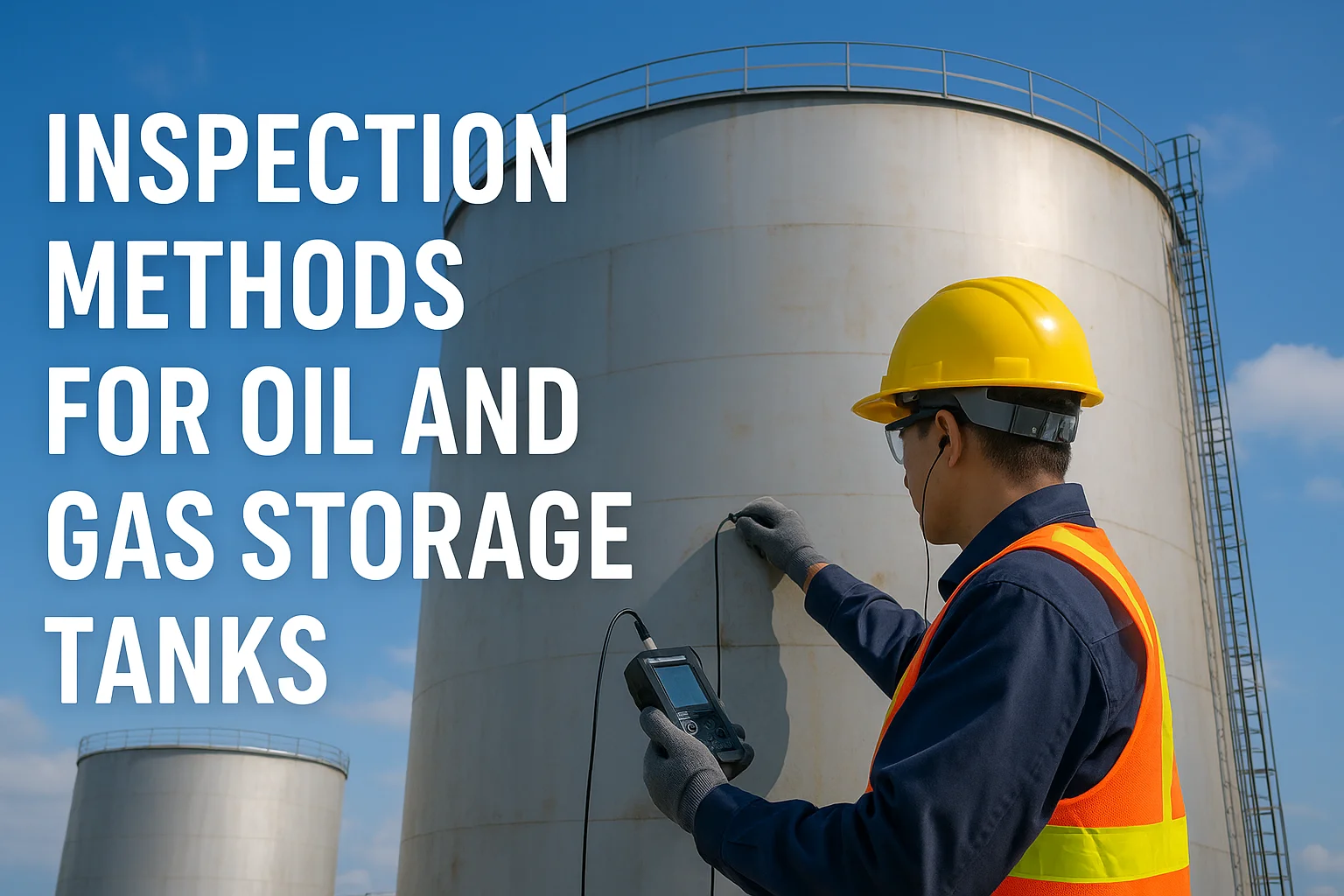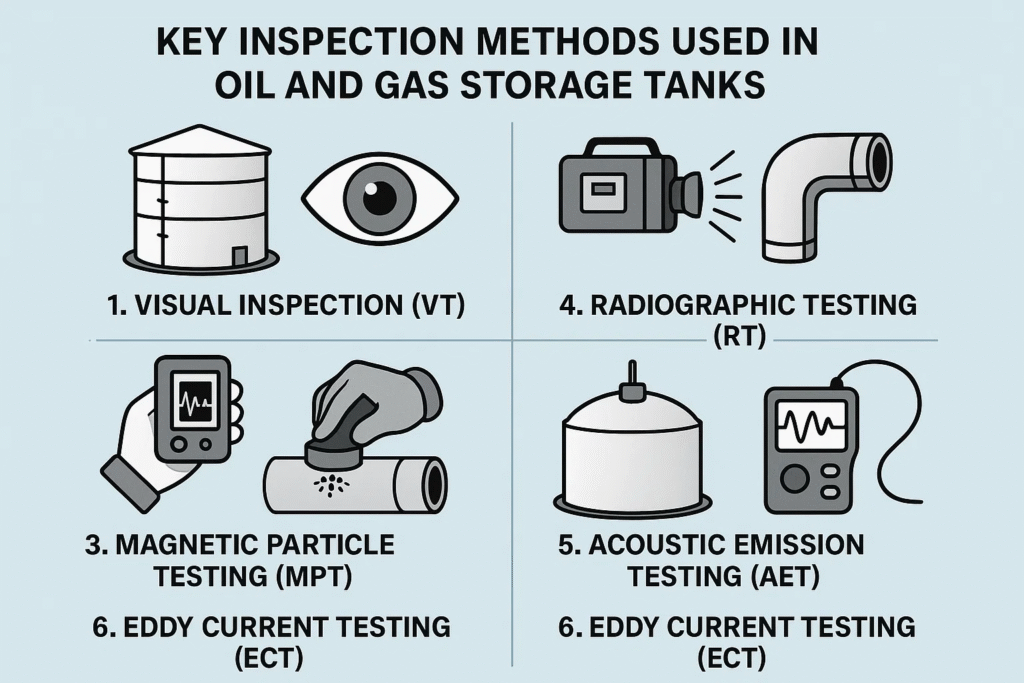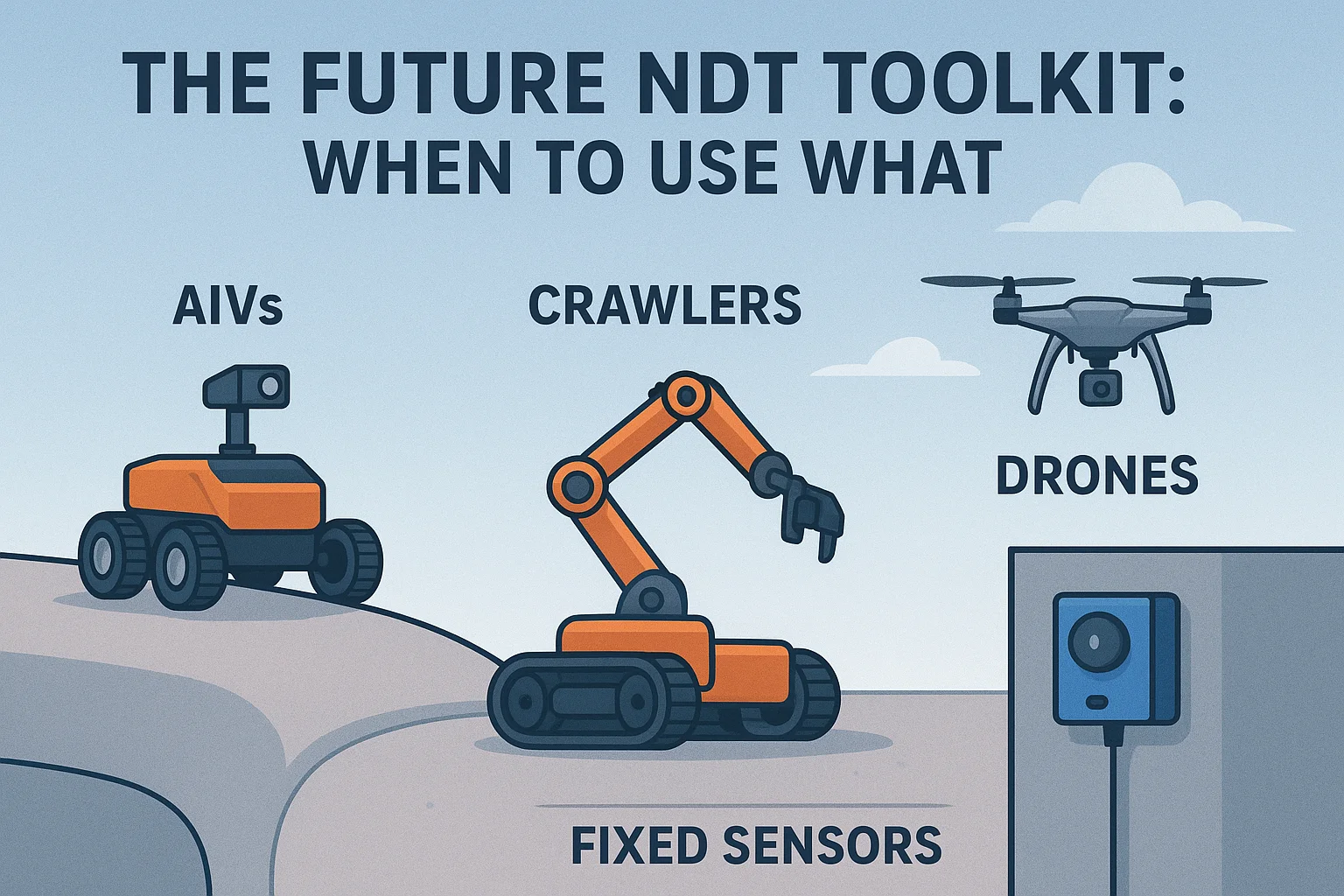Inspections Track Software For Oil and Gas Inspection Industry

Regular inspection of oil and gas storage tanks is vital to ensure safety, prevent leaks, and comply with international regulations. In such a high-stakes industry, even a minor flaw can lead to environmental damage, costly downtime, and safety risks. This guide breaks down the most effective inspection methods for storage tanks, their advantages, and how advanced tools like InspectionsTrack Software are transforming the inspection process.
Storage tanks in the oil and gas industry hold flammable or hazardous materials under varying pressure and temperature conditions. Over time, they face degradation, corrosion, and structural fatigue. Routine inspections help to:
There are two main categories of tank inspections: Internal and External. Let’s explore each in detail.
| Type | Description | Frequency | Common Techniques Used |
|---|---|---|---|
| External Inspection | Visual and non-destructive testing performed from outside the tank. | Annually or semi-annually | Ultrasonic Testing (UT), Visual Inspection, Magnetic Particle Testing (MPT) |
| Internal Inspection | Conducted inside the tank when it’s out of service to assess internal corrosion and structural integrity. | Every 10 years or as per regulations | Ultrasonic Testing, Radiographic Testing, Eddy Current Testing |

Visual inspection is the first line of defense in identifying visible cracks, deformations, or leaks. It’s fast, cost-effective, and suitable for both internal and external evaluations. However, it often requires additional non-destructive testing (NDT) for deeper insights.
UT measures the thickness of the tank wall and identifies internal corrosion or erosion. By sending high-frequency sound waves through the tank material, inspectors can detect hidden flaws without causing damage.
Benefits:
MPT is used for detecting surface and near-surface cracks in ferromagnetic materials. Magnetic particles gather at defect points, making cracks visible under UV or white light.
Applications: Weld seam inspection, nozzle joints, and base metal examination.
RT involves using X-rays or gamma rays to detect internal defects. It provides a comprehensive view of weld quality, internal cracks, and corrosion under insulation.
Advantages:
This modern technique detects active corrosion and crack growth in real time. It’s effective for large storage tanks during hydrostatic testing or in-service conditions.
Eddy current testing is mainly used for non-ferromagnetic materials. It detects pitting, cracking, and wall thinning by measuring changes in electromagnetic fields.
Each inspection method serves a different purpose, depending on the tank’s material, age, and operating environment. Here’s a quick comparison:
| Method | Best For | Accuracy Level | In-Service Capability |
|---|---|---|---|
| Visual Testing | Surface flaws | Medium | Yes |
| Ultrasonic Testing | Wall thickness, corrosion | High | Yes |
| Radiographic Testing | Weld integrity | High | No |
| Eddy Current | Non-ferromagnetic metals | Medium | Yes |
| Acoustic Emission | Crack growth detection | High | Yes |
Manual inspection methods can be time-consuming and prone to error. This is where digital inspection platforms like InspectionsTrack Software make a difference.

With InspectionsTrack Software, oil and gas companies can streamline inspection workflows, reduce downtime, and ensure complete compliance—all within one unified platform.
Efficient inspection methods are crucial for maintaining the safety, reliability, and longevity of oil and gas storage tanks. Whether it’s ultrasonic testing for corrosion or radiography for weld integrity, each technique plays a key role in risk prevention.
By integrating InspectionsTrack Software, businesses can simplify inspection management, improve accuracy, and achieve regulatory compliance—all while saving time and resources.
Read more : how to test and maintain your pressure relief valve prv
External inspections are typically performed annually, while internal inspections are recommended every 10 years or as per local regulations.
Ultrasonic Testing (UT) is the most effective technique for identifying corrosion and wall thinning in metal tanks.
It digitizes the entire inspection process—automating scheduling, reporting, and analytics to ensure safety and compliance.

Introduction: Why the Inspection Mindset Matters In modern oil and gas operations, safety cannot rely solely on checklists. While checklists ensure compliance, they rarely capture the deeper insights needed to prevent failures. Therefore, the real…

Introduction: The Evolving Landscape of NDT Non-Destructive Testing (NDT) has entered a new era one defined by automation, robotics, and real-time data intelligence. Traditional manual surveys still matter, yet modern inspection teams now rely on…
SkySoft Connections provides quality IT services around the globe. Our services begin with experience and end with dedication, ensuring innovation and reliability
© Copyrights, 2024 All Rights Reserved Skysoftconnections
Contact us
Get notified about new articles
Comment (1)
Non-Destructive Testing Trends for Oil & Gas 2025 - inspectiontrack
Oct 13, 2025[…] Read more : inspection methods for oil and gas storage tanks […]
Comments are closed.